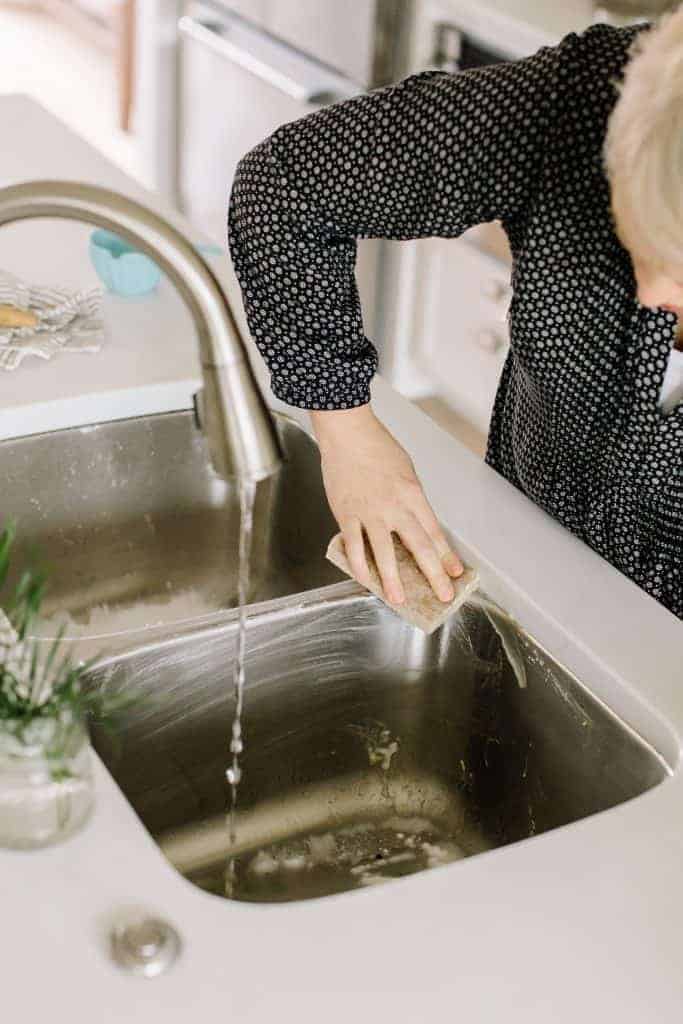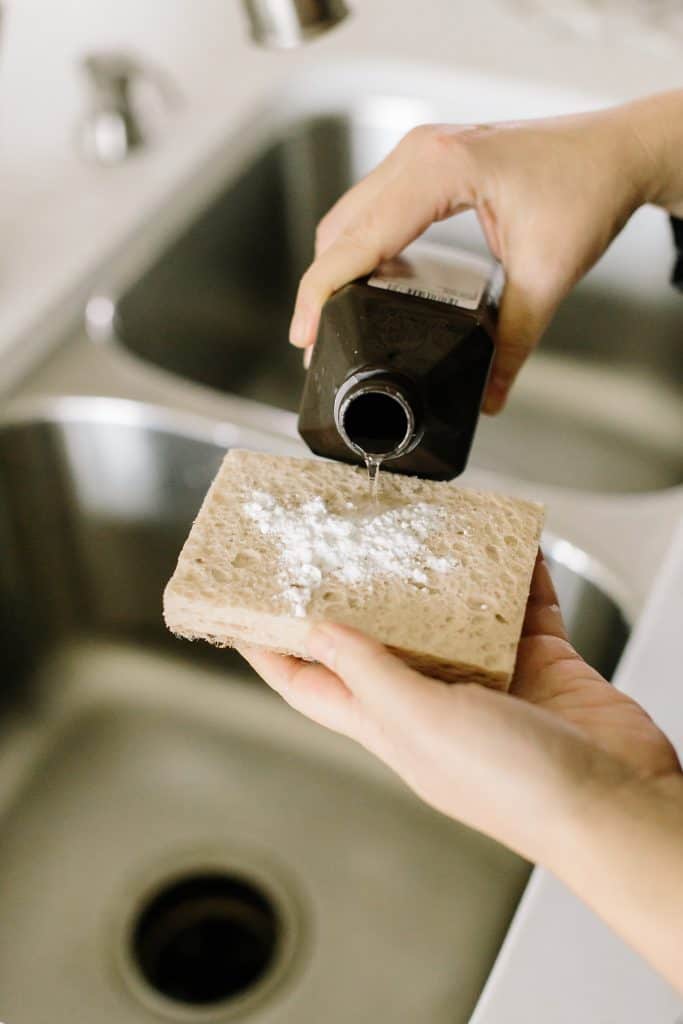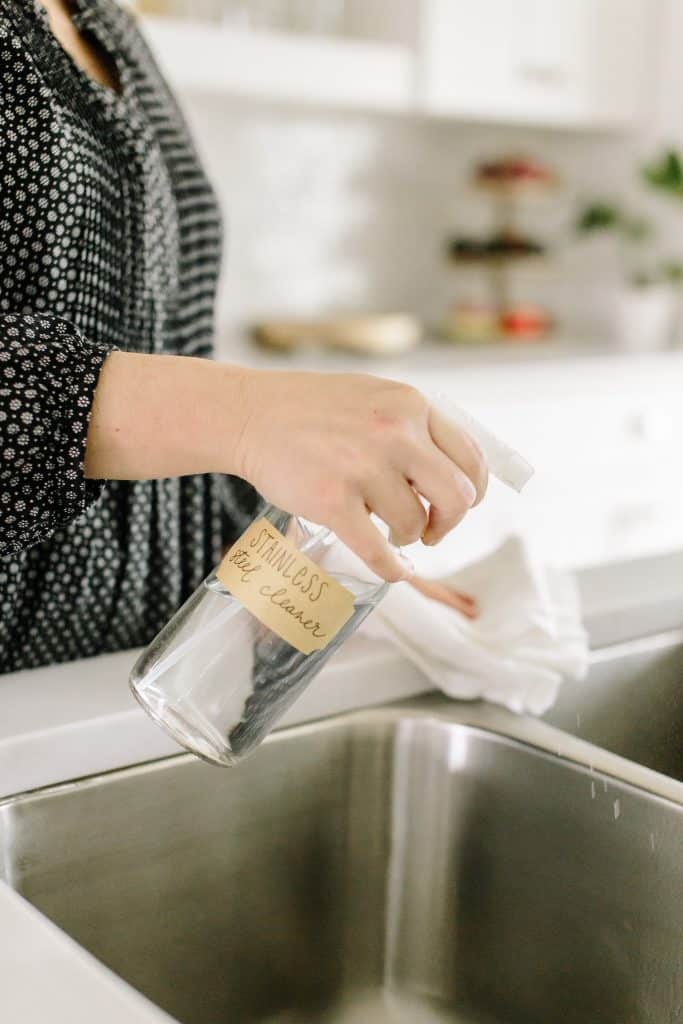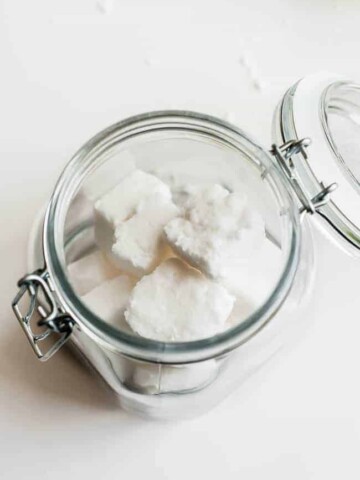When we finished our kitchen renovation I was giddy about how everything turned out. Fast forward a week or two after actually using the kitchen, and it was clear I had screwed up one thing - our sink.
I've done the farmhouse sink before and didn't love it. So we went with a really basic two bowl stainless steal undermount. Big mistake. None of my pans fit in there! I can't soak anything! What was I thinking?!
Despite my sink remorse, I do still love to give it a deep clean. A dirty sink grosses me out! And it definitely needed one after I covered my whole kitchen in kitchari. You know how turmeric stains your skin? Yeah, it stains sinks, too.
How To Clean Your Stainless Steel Sink
 Step 1 - Scrub with baking soda
Step 1 - Scrub with baking soda
Give your sink a good rinse with water and then sprinkle baking soda all over. I love these scented baking soda blends.
Baking soda is perfect for scouring jobs because it gets the grime without scratching or damaging the surface. It’s especially good for stainless steel sinks and porcelain. I've also heard good things about Bon Ami and Bar Keeper's Friend, but haven't tried them personally.
Let the baking soda sit in your sink for at least 10 minutes (or overnight). Then use a soft sponge to give the whole sink a good scrub. Don't use steel wool or steel brushes that might scratch the surface and leave behind metal particles that can lead to rust.
Step 2 - Target stains with cream of tartar
Rinse out the baking soda. I've read several stainless steel tutorials that rinse the baking soda with vinegar. Using vinegar with baking soda is tricky. The two will react together to make a fun bubbling fizz, but is it really doing anything?
In a sink-cleaning scenario, the answer is not a whole lot. A vinegar rinse is helpful in removing hard water deposits, but that's not really valuable unless you have hard water. If you want the acid cleaning effect of vinegar, pour it over your sink after rinsing out the baking soda.
For stubborn sink stains, try cream of tartar. It's an acid cleaner with scouring power. Combine with a bit of hydrogen peroxide to make a paste and apply it to the stain. Let it sit for about 5 minutes then scrub and rinse off.
Step 3 - Condition with olive oil
Now that your sink is sparkling clean, pour a few drops of olive oil to a soft cloth to buff the sink and fixture. Apply going with the grain of your sink. This doesn't make my sink shine per se, but it does seem to help condition the sink and reducing scratching.
Step 4 - Make it shine with rubbing alcohol
Then to really make your sink and faucet shine, spritz with this stainless steel cleaner. The alcohol is great for cutting the grease from fingerprints. And it dries so fast and makes things super shiny. Your sink will look brand new!
Step 5 - Maintain
To keep your sink in tip top shape, it's recommended that you wipe it dry after every use as sitting water can lead to water deposits. That's a little more OCD than I can handle, but you do you.
103






